...
Step 1: Create a user account with the relevant permissions
...
This process has created a new Login user with the correct permissions.
Step 2: Set permissions for remote access
In this step we will enable remote connections on the instance of SQL Server that you want to connect to from a remote computer.
...
| Tip |
|---|
| title | Start, Stop, Pause, Resume, Restart the Database Engine, SQL Server Agent, or SQL Server Browser Service |
|---|
|
| To learn how to Start, Stop, Pause, Resume, Restart the Database Engine, SQL Server Agent, or SQL Server Browser Service, follow the information here: https://msdn.microsoft.com/en-GB/library/hh403394.aspx |
Step 3: Turn on the SQL Server Browser Service
Open SQL Server Configuration Manager and click on “SQL Server Services” in the left pane, right-click SQL Server Browser service and select Properties.
 Image Modified
Image Modified
Go to the Service tab and for the Start Mode option change start the type to Automatic.
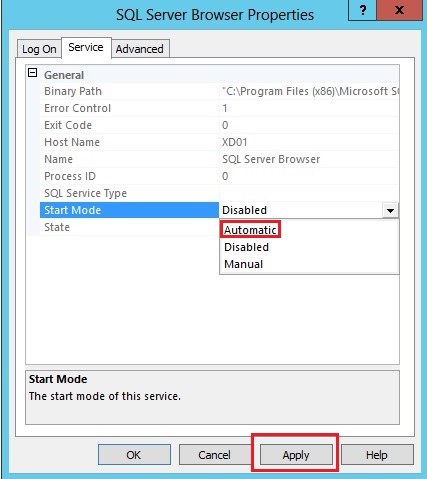 Image Modified
Image Modified
Click the Start button to start the SQL Browser service.
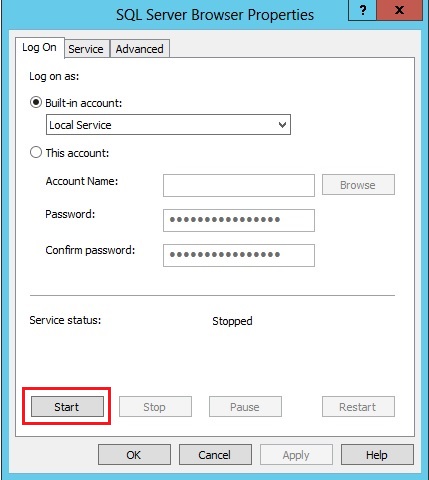 Image Modified
Image Modified
Confirm that the SQL Server Browser service is in the Running state.
 Image Modified
Image Modified
Step 4: Configure Firewall to allow network traffic
In this step we will configure the firewall to allow network traffic that is related to the SQL Server and to the SQL Server Browser service.
The following two ports will need to be set:
- A port exception for TCP Port 1433. In the New Inbound Rule Wizard dialog, use the following information to create a port exception:
- Select Port
- Select TCP and specify port 1433
- Allow the connection
- Choose all three profiles (Domain, Private & Public)
- Name the rule “SQL – TCP 1433″
- A port exception for UDP Port 1434. Click New Inbound Rule again and use the following information to create another port exception:
- Select Port
- Select UDP and specify port 1434
- Allow the connection
- Choose all three profiles (Domain, Private & Public)
- Name the rule “SQL – UDP 1434
...
| Tip |
|---|
| title | To access SQL Server on other computer |
|---|
|
- Open SQL Server Management Studio
- In Object Explorer, click on Connect -> Database Engine
- In Server name, give the IP address of the computer where SQL Server is installed, click on Connect.
.png?version=1&modificationDate=1586960603019&cacheVersion=1&api=v2&width=500)
|
Step 5: Setting up Authentication
In SQL Server Management Studio, right-click on the server name in the left pane and select Properties.
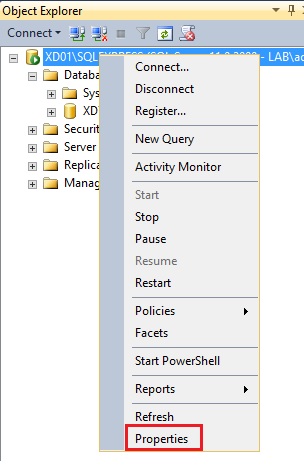 Image Modified
Image Modified
From here, select Security and under Server authentication, select SQL Server and Windows Authentication mode.
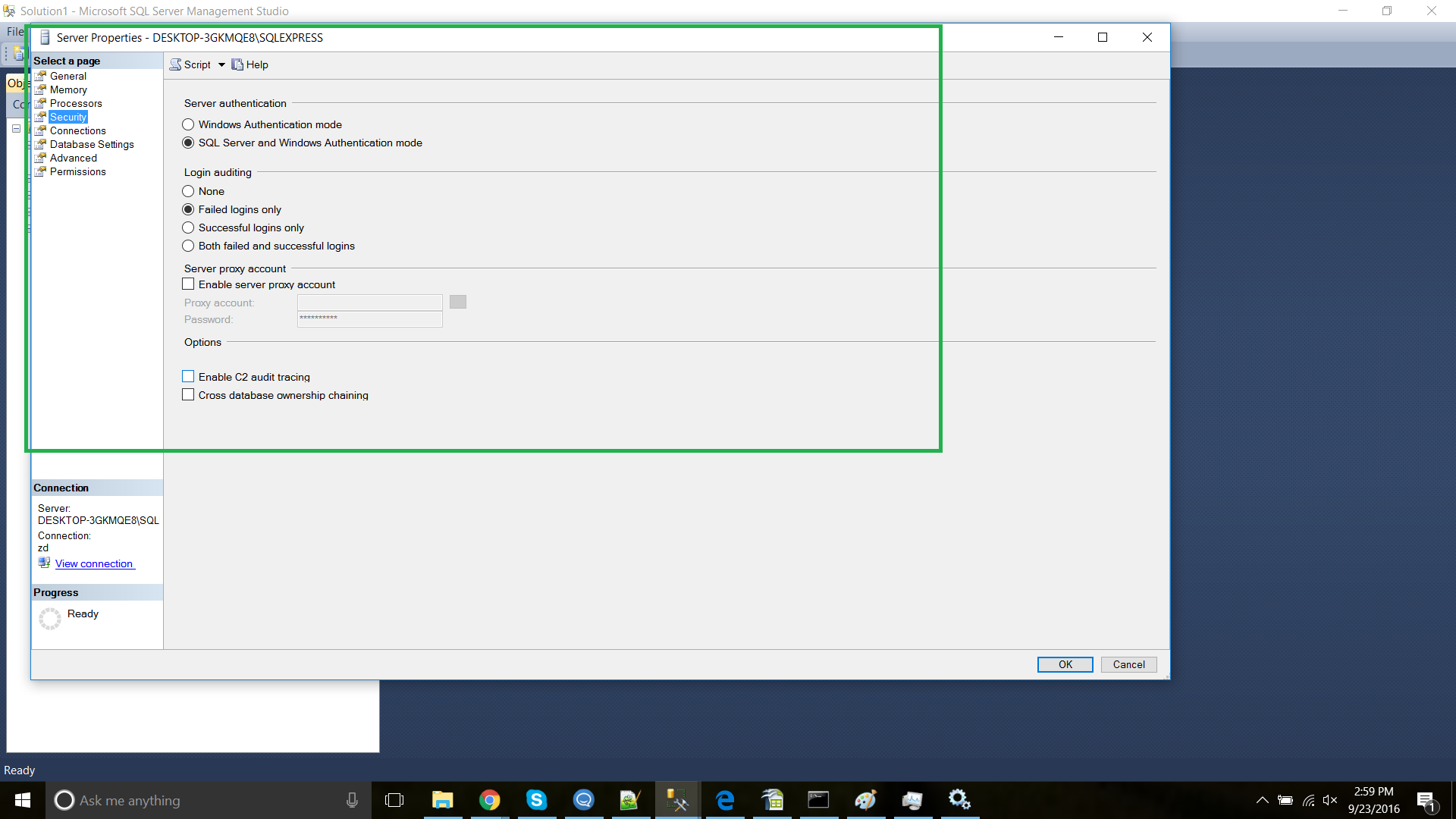 Image Modified
Image Modified
Step 6: Install Zephyr and Connect to the Database
Now the Database is ready, open the Zephyr installer. The wizard will take you through the setup steps.
When prompted to "Choose deployment type", select between the Server or Data Center deployment type.

Provide the licence license file for Zephyr.
Complete the fields for connecting to the Database.
...
The Installation wizard will then provide Shortcut options, and install Zephyr.
After the install, follow these steps:
- For Windows : go to your Zephyr installation directory (the default is C:\Program files\Zephyr\):
...
(ii) Copy the cluster.properties.tmpl file to ..\usr\local:\Zephyr\tomcat\webapps\flex\WEB-INF\classes and rename the file to cluster.properties. Restart the Server.
Step 7: Setting up Memory
In SQL Server Management Studio, right-click on the server name in the left pane and select Properties.
 Image Modified
Image Modified
Now select Memory, and set the Minimum and Maximum server memory to the desired level. 8GB is our recommended minimum.
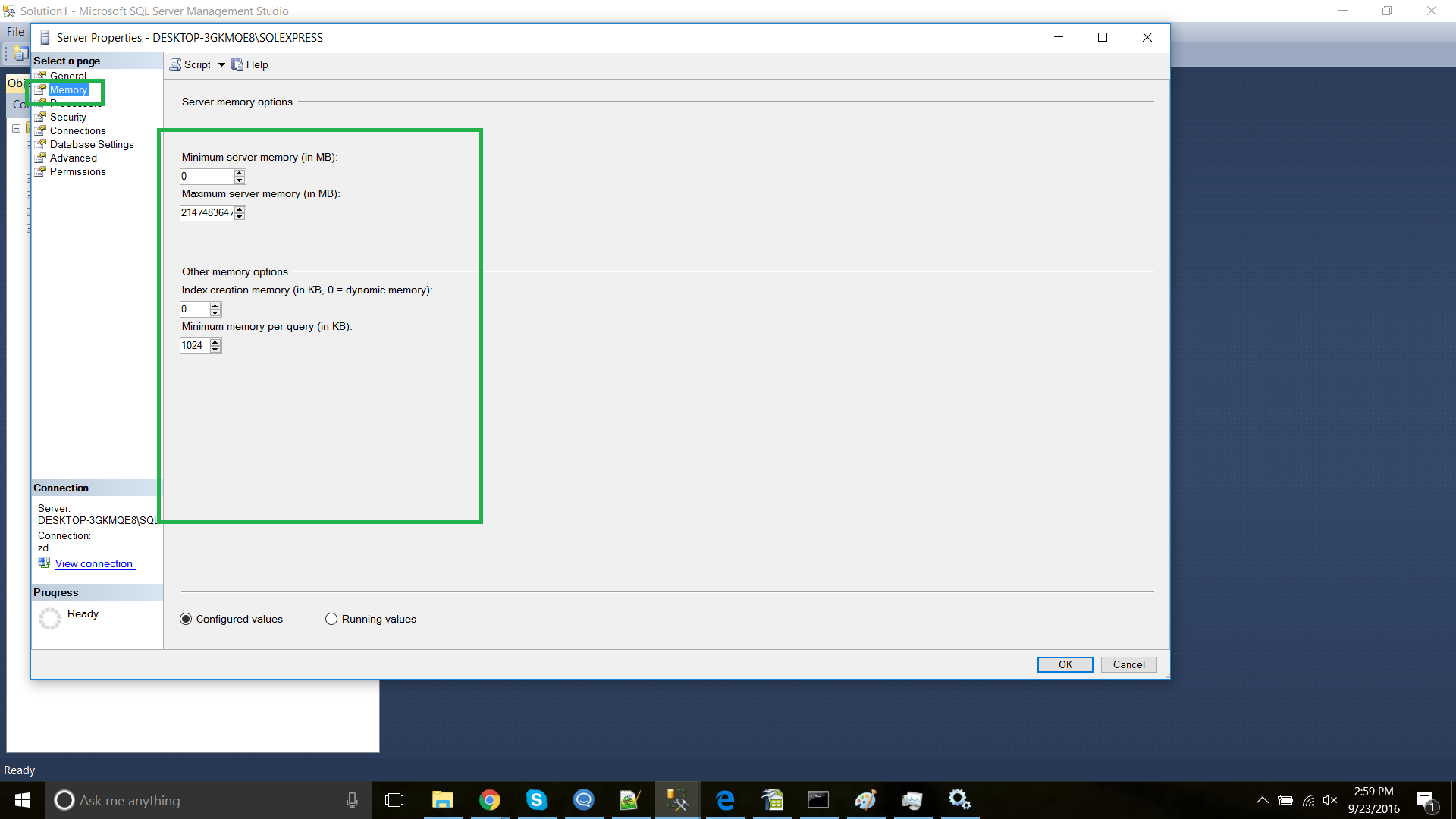 Image Modified
Image Modified
Step 8: Knowing where the Logs reside
Knowing where the Log files reside is useful when troubleshooting. To view the Logs in SQL Server, expand the Management tab, select SQL Server Logs. Click on View SQL Server Log.
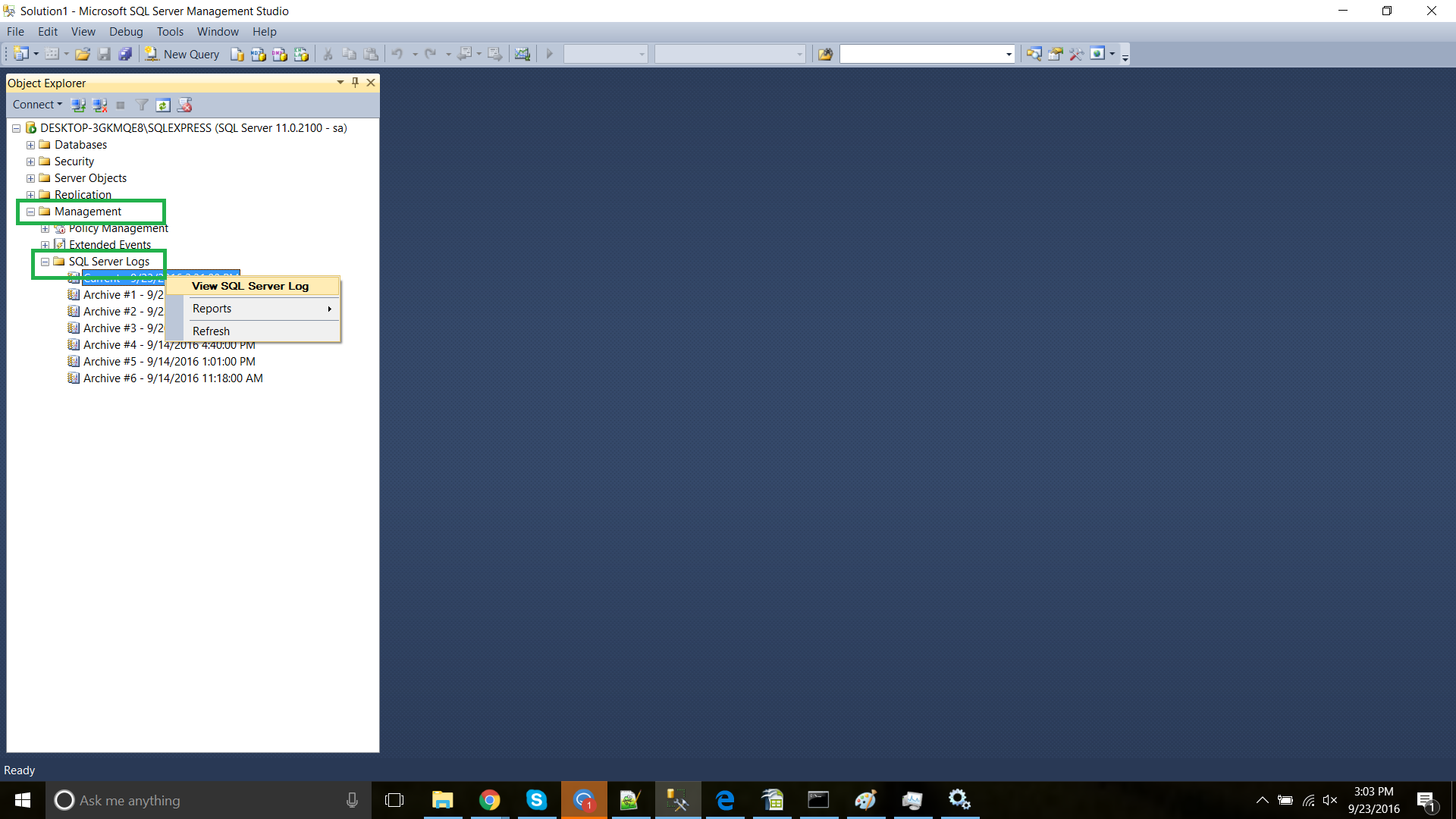 Image Modified
Image Modified
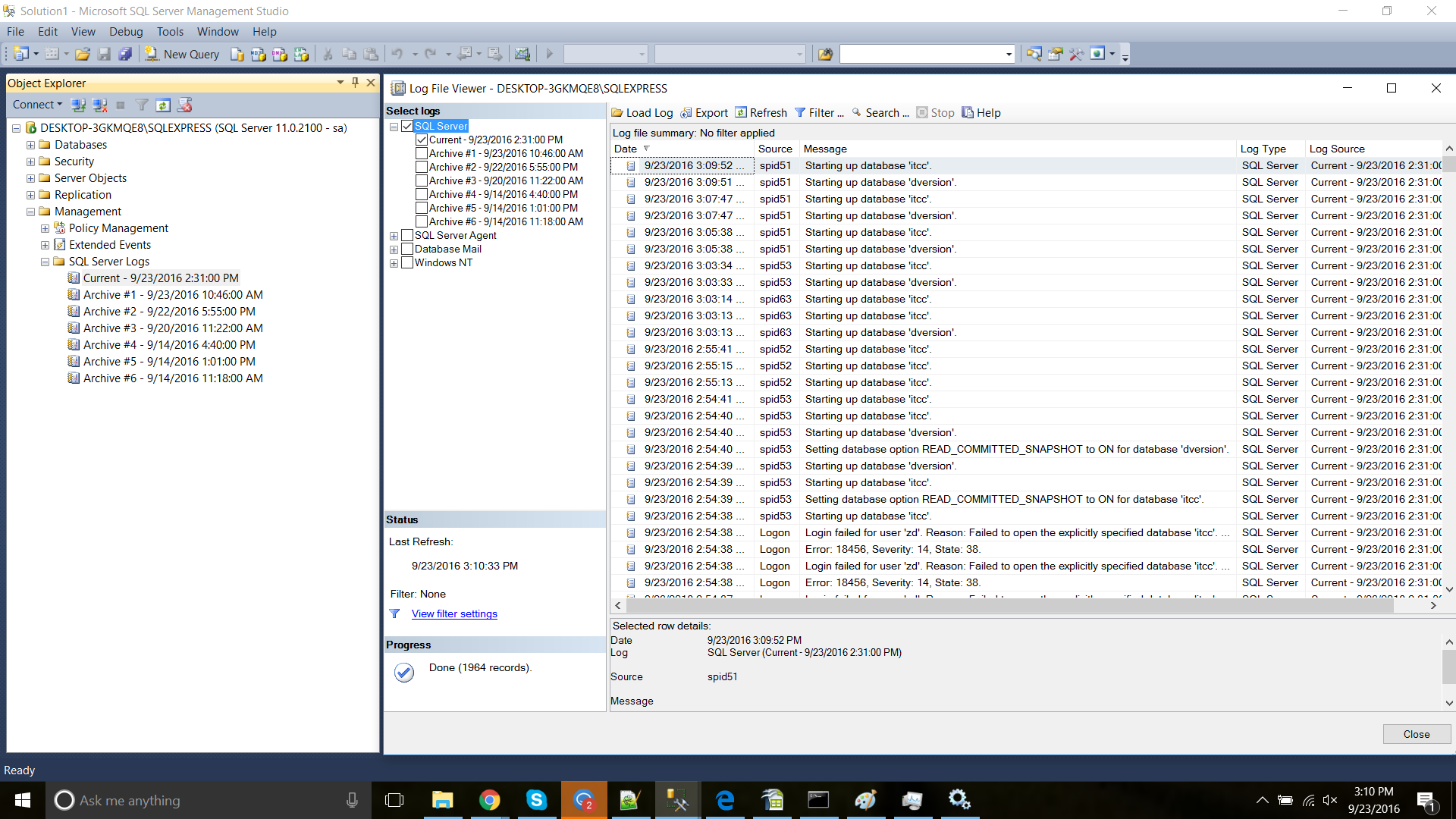 Image Modified
Image Modified
Step 9: Configuring additional nodes
Now that a Microsoft SQL Server Database is connected to one installation of Zephyr, Step 4 needs to be followed again for every additional application node of Zephyr.
Once this is complete, follow these steps:
- Log into one of the Application nodes where Zephyr is installed. Then log into Zephyr.
- In the Testcase Creation application, create a Subfolder, and then create a Testcase with some teststeps.
- Use the Object Explorer to log into the SQL Server Database.
- In Dversion database we will see the JACKRABBIT_JOURNAL_GLOBAL_REVISION table and also a JACKRABBIT_JOURNAL_LOCAL_REVISIONS table.
- Get the current value of the REVISION_ID from the JACKRABBIT_JOURNAL_GLOBAL_REVISION table.

- The JACKRABBIT_JOURNAL_LOCAL_REVISIONS table will contain one entry for a node (i.e. "node2"). Add a new entry for the second node with its name and the value obtained from Step 5.

...




.png?version=1&modificationDate=1586960603019&cacheVersion=1&api=v2&width=500)







